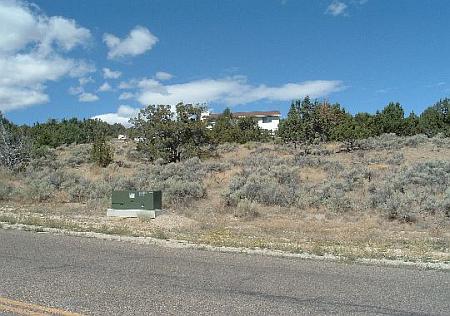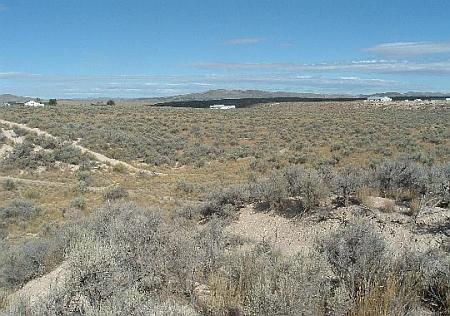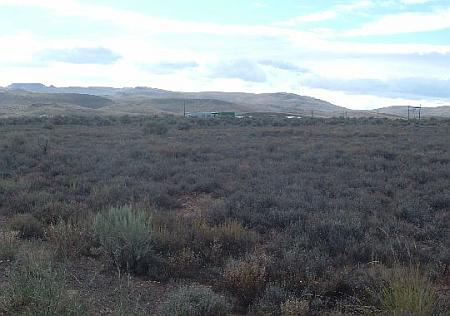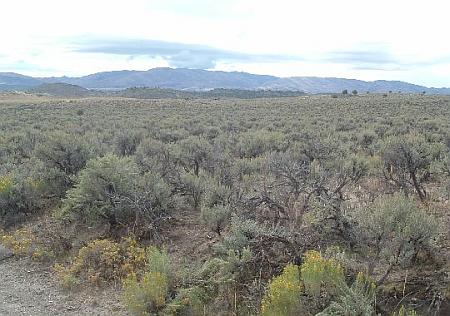Appendix C - Photographs of Representative Fuel Types
Representative Fuel Types
Photo 1. High hazard juniper and sagebrush fuel types exist in many communities in Elko County including Spring Creek. Ground fuels include cheatgrass, basin wildrye, bluegrass, and squirreltail one to three feet tall. The shrub layer is composed of sagebrush, rabbitbrush, and broom snakeweed standing one to three feet high.
Photo 2. Big sagebrush intermixed with crested wheatgrass is a common wildland-urban interface fuel type in Elko County. Fuel loads were estimated at two to four tons per acre and considered a moderate fuel hazard.
Photo 3. Low sagebrush and black sagebrush are generally less than one foot tall and were often considered either a low or moderate fuel hazard depending upon plant density, grass cover, and slope.
Photo 4. Salt desert shrub vegetation surrounds several communities in Elko County including West Wendover and Pilot Valley. Fuel loads were estimated between one and three tons per acre and were considered a moderate fuel hazard.
Photo 5. Big sagebrush and rabbitbrush are the dominant species in the sagebrush vegetation type. This fuel type is generally found along lower elevation valley bottoms and fans below pinyon and juniper or mountain shrub types. Fuel loads ranged between two and six tons per acre and were considered a moderate to high fuel hazard depending upon plant density and slope.





